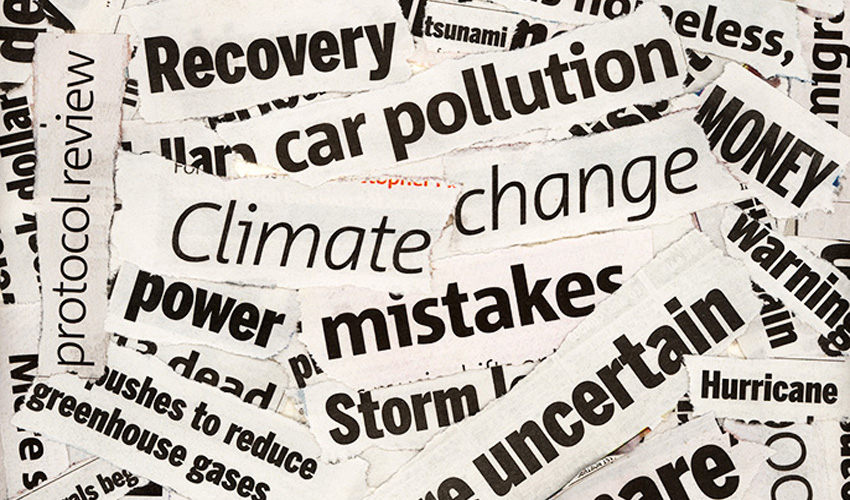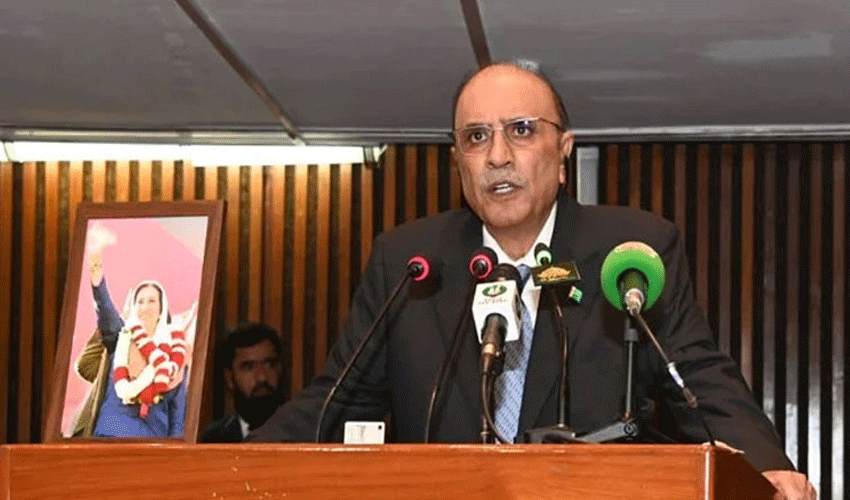Pakistan is getting increasingly vulnerable to the vagaries of climate change, yet this vital issue is getting scant attention from our media. Pakistan stands in the top ten list of countries falling within the climate change hotspot zone and the dire consequences of climate change have to be brought sharply into focus.
From the mountainous north down to the low-lying Indus Delta in the south, the country is fast headed towards the frontiers of disaster. Given the number of television channels and newspapers in the country, climate change features well below other stories. This amounts to neglect not only of public awareness but also of our ability to address and reduce climate-related challenges effectively.
The most recent study done by the Centre for Excellence in Journalism and the Institute for Research, Advocacy and Development highlighted a disturbing lacuna in media coverage about climate change. The report card did an assessment of the reporting on unprecedented flooding from the 2022 monsoon season. Astoundingly, out of three mainstream news outlets reviewed, only one reported on flooding in relation to climate change, and this was in only 21% of flood-related stories. This lack of emphasis on climate change reflects a larger problem within the greater media landscape.
With the Indus Basin floodplain, Pakistan is inherently a flooding disaster area. However, on top of this natural factor is climate change, which brings new ways in which weather patterns are intensified-shifting to even more frequent and unpredictable floods and droughts. Inability by media to point out the linkage of climate change to such weather phenomena lessens public awareness and preparedness.
The 2022 catastrophic flooding affected 33 million people across 84 districts and caused an estimated damage of $15 billion. Inadequate support from donors, coupled with a struggling economy by Pakistan, meant that the government was not in a strong enough position to take up the immediate needs of those who were affected. Furthermore, country resilience is still inadequately bolstered against any future events of flooding.
Another urgent climate issue is that of seawater intrusion. Over the last three decades, as estimated by WWF-Pakistan, seawater has pressed 1 km inland. Already, the intrusion has pushed away some 1.5 million of fisherfolk and other poor communities because the freshwater resources have been polluted. Despite the gravity of this impact, this menace has received scant attention in the media.
It underlines the bigger problem of the absence of the climate change beat in most Pakistani media. The frenetic cycloramic twists in political dramas and scandals push down coverage of the inexorable and increasingly intense climate impact on the lives of millions. This mistaken prioritization cuts through many layers of society, not least in health.
The unprecedented floods in 2010 and 2022 caused an increase in waterborne diseases like hepatitis, diarrhoea, cholera, typhoid, and food poisoning. Repeated crop loss due to flooding and drought further aggravated undernutrition and stunting among the most vulnerable section of the population. Media barely reports on water stress affecting poor families and the demand it puts on women and girls who toil for hours just to fetch water.
The limited media coverage of climate change tends to focus on drama, like natural disasters. The journalists who are assigned to such events rarely have the time or special expertise needed for detailed research on the stresses arising from climate. This lack of depth makes for superficial coverage of these issues, rather than delving into the broader and systemic ones.
However, the positive signs are that some donor agencies have now started supporting initiatives for the betterment of media coverage of climate change. This is evident by the publication entitled 'Pakistan: On the Frontline of Climate Change' by aims at a comprehensive overview of the climate impacts, its governance, and legal frameworks to the journalist community. These types of initiatives can be considered steps in the right direction but cannot be relied upon solely .
Addressing this effective media gap has to be based on commitments by media houses to strengthen internal capacities of understanding climate change and its implications. Journalists need consistent training on how to do comprehensive coverage of the climate issue, including how it crosses with other sectors like health, agriculture, and water management.
They should, therefore, play a major role in the highlighting of the issue of climate change, as well as acting as the watchdog for governments and policymakers to ensure that all pledges with respect to climate issues are honored. Greater media attention to climate change will enlighten not only the general public but also those who will take responsibility for this pressing issue.
Media cannot be overemphasized in fighting against climate change. With the impacts of climate change on a constant rise, at this point, it would be quite important for the media to give climate change a high matter of concern. This can be done by committing resources to comprehensive reporting, engaging in active collaboration with experts and organizations, and also ensuring that climate change will be debated within a wider discussion on policy and development.
The faster the media realize bringing climate change to the public forefront is important, the quicker we all can mobilize action. It's shifting the focus from fleeting political controversies to long-term impacts from climate change and in turn forcing meaningful changes that support building a more resilient and sustainable future for Pakistan.
Overall, the media can and should play a profoundly vital role regarding climate change. Emphasize comprehensive and informed coverage; let us create awareness, influence policies, and, consequently, contribute our quota toward limiting the adverse impacts of climate change on our country. It is high time for the media to wake up to this reality now or never for our future.



























